Encourage learners to think collaboratively with speaking and listening tasks
Effective group discussions will give learners the opportunity to build a shared understanding of structure and bonding by articulating ideas that are developed and challenged constructively within the group.
Learning objectives
- Apply descriptions of covalent, ionic and metallic bonding to justify the different physical properties of covalent, ionic and metallic structures.
- Develop speaking and listening skills by using the structured talk foundations to help manage your group’s discussion.
- Build a shared understanding of the structure and bonding in the different forms of carbon, distinguishing between simple and giant structures from information about physical properties.
- Evaluate how successful your group’s word bridge is by comparing to the other examples.
Introduction
Like any learning activity, effective discussion requires planning for purpose, content, action, time and reflection. Set learners a word bridge task to provide scaffolding that enables them to collaboratively reach a greater level of understanding than can be achieved alone and without the scaffold support. Put learners into groups of three, in defined roles and task them with laying a conceptual word bridge from start to end, armed with a fact and some words to use as planks.
Word bridges were originally introduced in our article Constructive conversations with talk triplets.
Resource components
The student slides include three sections:
- Supporting information – learning objectives, a worked example, speaking and listening rules, roles and metacognitive questions.
- Word bridges – five word bridges for learners to build in groups, plus example answers.
- Fix the bridge – five misconceptions (related to the word bridges) for learners to discuss in groups, plus example answers.
How to use word bridges
Set up the task
- Present the purpose of the task – to have structured conversations about chemistry, which help everyone to learn.
- Introduce the idea of ground rules in speaking and listening (slide 4).
- Invite comments and updates and keep the rules visible to learners throughout.
- Split the class up into groups of three in which one learner will take role A (architect), one will take role B (bridge builder) and one will take role C (civil engineer). Provide each group with a print out of slide 5, which introduces the roles.
- Talk through/display the ‘Building word bridges’ slide (slide 6). Provide each group with a printout of the sentence starters slide (slide 7).
- Project a word bridge onto the board. Provide each group with a printed copy of the word bridge if helpful.
Model structured talk
- Model a word bridge conversation first, before asking the learners to begin. You can use the worked example provided on slide 9.
Suggested sequence
- Give the learners 30 seconds to silently look at the word bridge fact and plan how they could use the words provided to get from the start to the end.
- Give learners two minutes – in their different roles – to discuss the best way to use all the words provided to build the bridge. Remind them to use the fact provided to help link the start point to the finish point.
- Select a few groups to share their ‘bridge’ with the class (this is part of C’s role) and ask the class for feedback before providing the sample answer and correcting misconceptions. You can allow about five minutes for this. This step is essential to avoid misconceptions going unchallenged.
- Ask learners in each group to swap roles so A becomes B, B becomes C and C becomes A. Talk through the ‘Fix the bridge’ instructions slide (slide 12) and then display the relevant ‘Fix the bridge’ slide for the word bridge you are focusing on. Give the groups 30 seconds silent thinking time before asking them to assume their new roles.
- Give learners two minutes to discuss what is wrong, or what needs doing, with the ‘Fix the bridge’ statement and try to correct or complete it.
- Select a few groups to share their ‘Fix the bridge’ correction with the class (again, this is part of learner C’s role) and ask the class for feedback before providing the sample answer (allow about five minutes).
- Ask learners in each group to swap roles again (they should be adopting the third role this time) before supplying the next word bridge and repeating the process.
- End the structured talk by inviting answers to the questions on the reflection slide. Prioritise contributions from any learners who have not yet presented to the class.
Tips for success
- Structured talk may be new to you and your learners. It takes time and regular practice for the groups to work effectively as a team, but it’s worth it.
- Encourage learners to give each other feedback during this activity. This is essential for them to develop their speaking and listening skills in this chemistry context. Following the suggested sequence above provides opportunities for peer and teacher feedback.
- Prompt learners to provide feedback during discussions with questions like: ‘in what way do you agree or disagree with what X has just said?’
Provide additional support by listening in and feeding back in groups’ initial discussions.
Project a stop clock to keep learners on task and to time.
- Throughout the activity, prompt learners to consider the metacognitive questions on slide 8 – provide printouts of this slide, if helpful. Revisit the slide as part of the reflection at the end of the lesson if necessary.
Adaptations
More support
- Use one word bridge at a time and emphasise establishing the speaking and listening rules. Following the timings above, each word bridge cycle should take about 15 minutes.
- Encourage learners who are uncomfortable with feeding back to the class to tell you so that you can make sure they are not the first one up.
- Instead of role C always presenting to the class, you could use a random name draw or wheel to select who presents their triplet’s word bridge. Prepare these in advance by copying in the list of learners’ names.
- For less confident learners who may struggle to engage with the structured talk, provide a copy of this topic’s accessible glossary (rsc.li/444TbFh) so they can refer to any unfamiliar words.
Less support
- Devote a larger portion of the lesson to discussion and supply multiple word bridges among the different groups.
- Set up stations for each word bridge and get the groups to move around the room until every group has completed a circus of word bridges and ‘Fix the bridge’ problems. Five are provided in this resource for this topic.
- Use any printed word bridges for revision, or to visualise links between different topics that share common concepts. Task learners to arrange them into a topic map.
Metacognition
This resource supports learners to develop their metacognitive skills in three key areas.
Plan
Prompt learners to ask themselves the following questions during the 30 seconds of silent thinking time:
- Have I seen a task like this before? What will I need to complete this task and how am I going to do it? What is going to be challenging? What do I already know that will help me here?
Monitor
Discussion affords the opportunity to challenge personal knowledge and explore understanding by explaining and justifying ideas. Circulate round the triplets in their two-minute discussions and prompt learners to ask themselves:
- Are we using the fact to link all the words in order to move from the start to the end? Are we all staying in our roles of A B or C? Do we need to change anything in order to complete the task?
Evaluate
Prompt learners to reflect with these questions:
- How do you feel about this task? Why? How well did you and others adhere to the ground rules? How did you get on with each of the roles in the triplet? What went well and what was challenging? What have you learnt doing this activity that you can put into action next time you talk about chemistry?
Downloads
Structure and bonding structured talk student slides and answers
Handout | PDF, Size 0.94 mbStructure and bonding structured talk teacher notes
Handout | PDF, Size 0.19 mbStructure and bonding structured talk student slides and answers
Editable handout | PowerPoint, Size 1.17 mbStructure and bonding structured talk teacher notes
Editable handout | Word, Size 0.45 mb


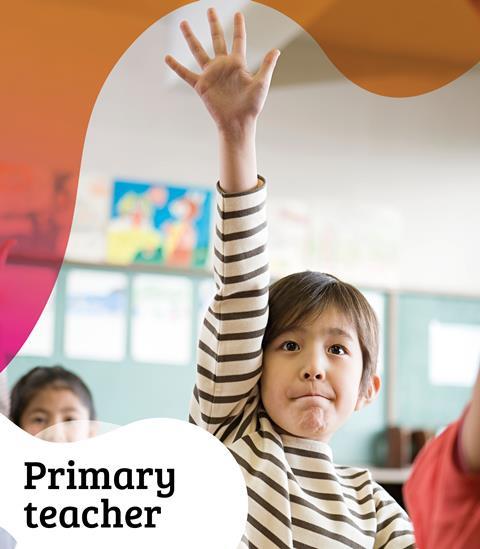


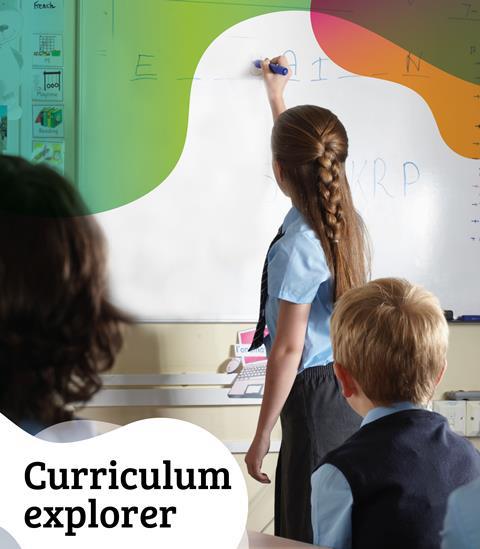






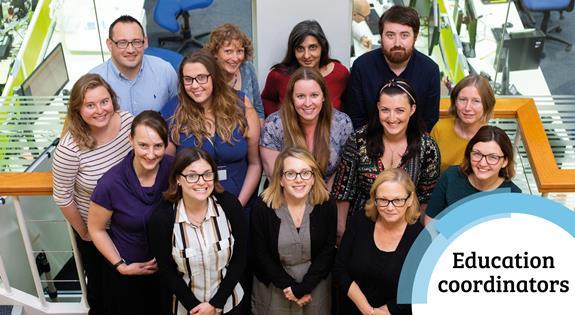

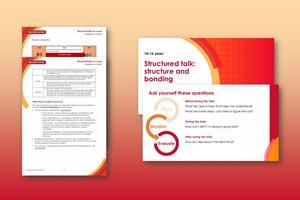
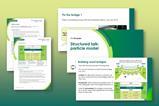
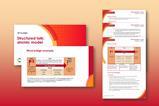




No comments yet